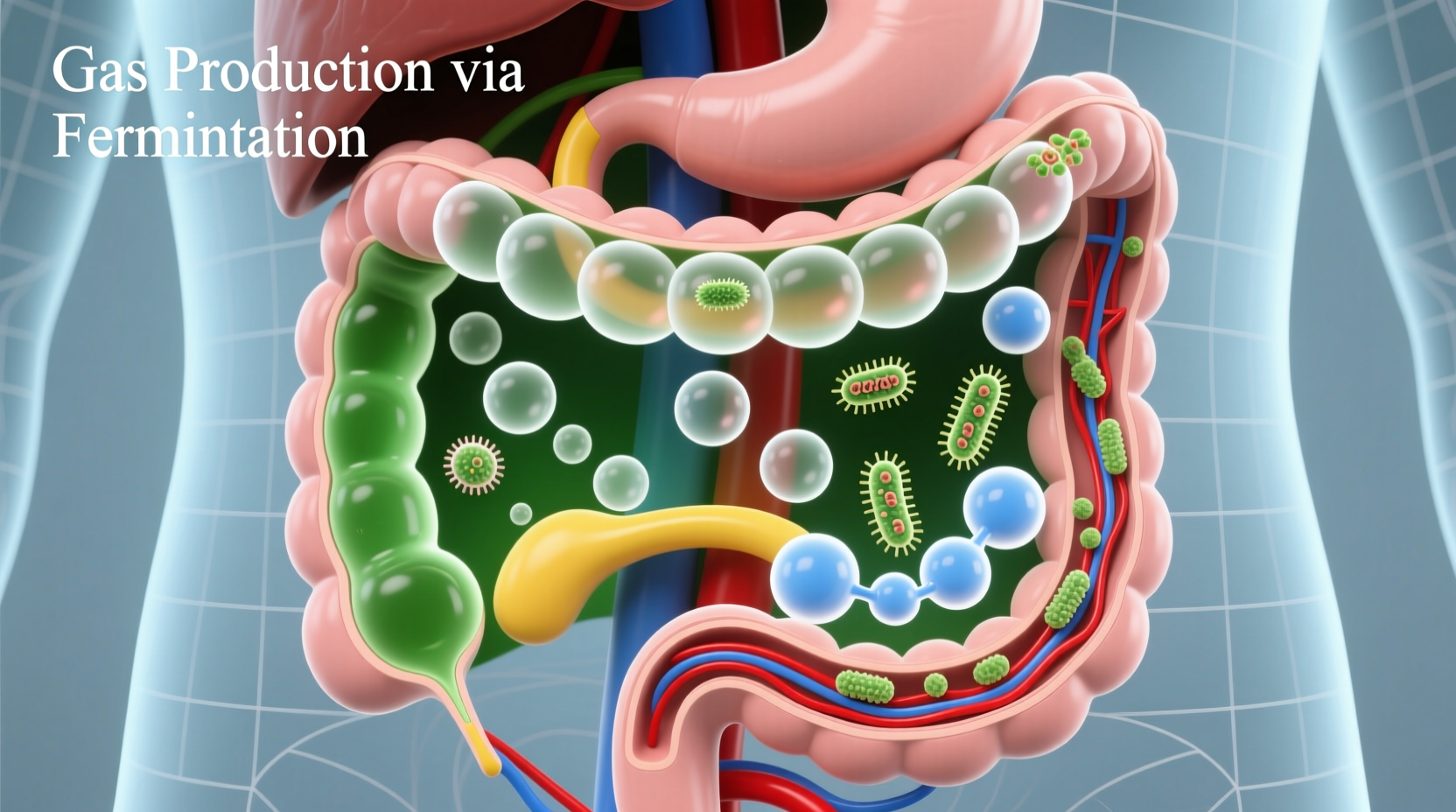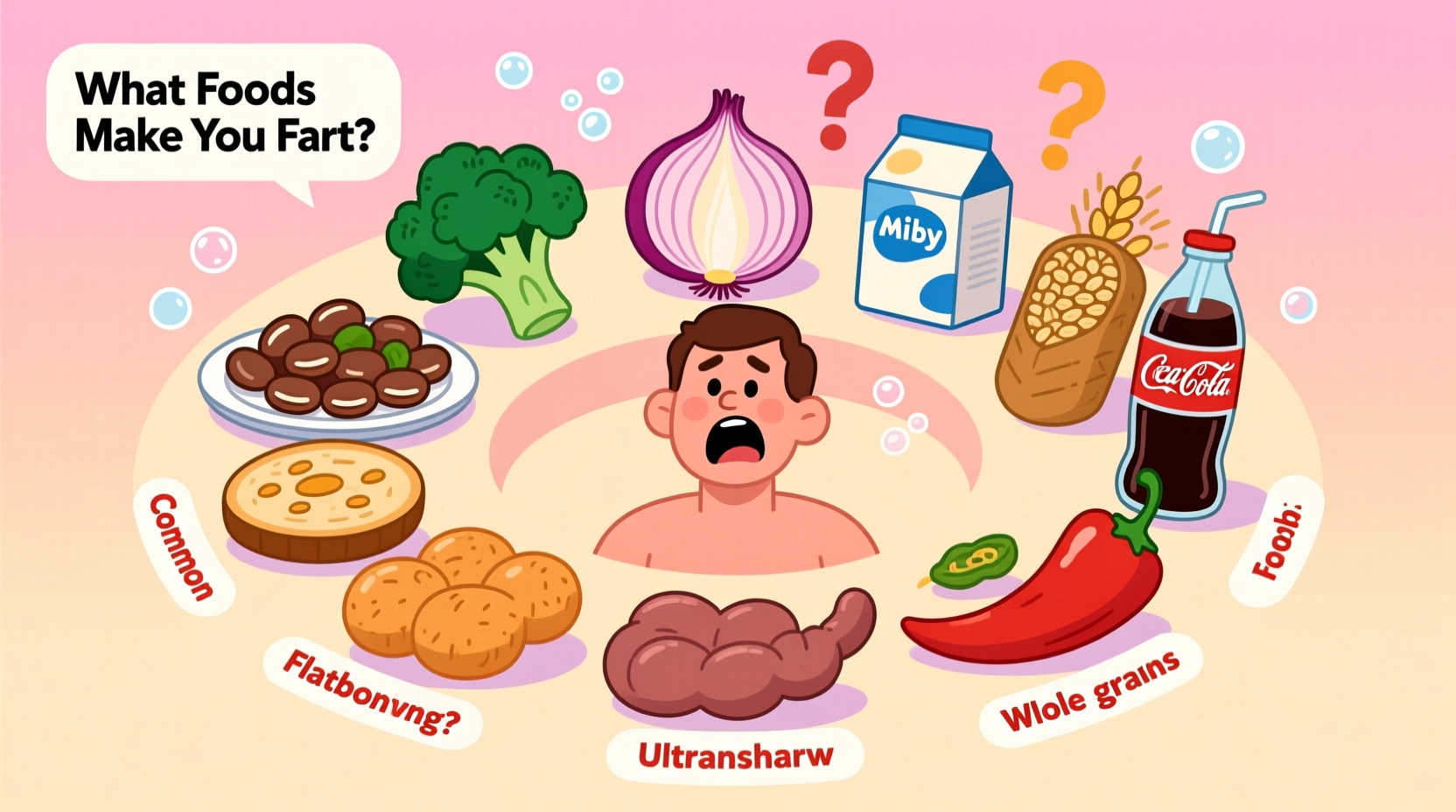Understanding which foods make you fart isn't just about embarrassment management—it's key to optimizing digestive health while maintaining a balanced diet. This comprehensive guide reveals exactly which foods trigger gas production, why they affect your system, and practical strategies to enjoy them without discomfort.
Why Certain Foods Make You Fart: The Science Simplified
Your digestive system processes food through enzymatic breakdown and bacterial fermentation. When certain carbohydrates resist digestion in the small intestine, they reach the colon where gut bacteria ferment them, producing hydrogen, methane, and carbon dioxide—the gases behind flatulence. This natural process affects everyone, but sensitivity varies based on individual gut microbiome composition.
| Food Category | Gas-Producing Compound | Average Gas Production* | Common Culprits |
|---|---|---|---|
| Legumes | Raffinose, Stachyose | ★★★★☆ | Beans, lentils, chickpeas |
| Cruciferous Vegetables | Raffinose, Fiber | ★★★☆☆ | Broccoli, cauliflower, cabbage |
| Dairy Products | Lactose | ★★★☆☆ (lactose intolerant) | Milk, ice cream, soft cheeses |
| High-Fructose Foods | Fructose, Sorbitol | ★★☆☆☆ | Apples, pears, artificial sweeteners |
| Wheat & Grains | FODMAPs, Fiber | ★★☆☆☆ | Bread, pasta, cereals |
*Based on clinical measurements from Mayo Clinic digestive studies. Gas production varies by individual tolerance.

Your Complete Gas-Producing Foods Guide
1. Legumes: The Classic Culprit
Beans, lentils, and chickpeas contain oligosaccharides—complex sugars your body can't fully digest. According to Mayo Clinic research, these carbohydrates reach your colon intact where bacteria ferment them, producing significant gas. Soaking dried beans for 8-12 hours before cooking reduces gas-producing compounds by up to 30%.
2. Cruciferous Vegetables: Healthy But Gassy
Broccoli, cauliflower, and Brussels sprouts contain raffinose and high fiber content. While these vegetables offer exceptional nutritional benefits, their complex carbohydrates challenge digestion. The NHS reports that approximately 65% of people experience increased flatulence when significantly increasing cruciferous vegetable intake.
3. Dairy Products: The Lactose Connection
For the 68% of the global population with some degree of lactose intolerance (per National Institutes of Health data), dairy products cause gas as undigested lactose ferments in the colon. Hard cheeses and yogurt typically cause fewer issues than milk or ice cream due to lower lactose content.
4. Common Gas Triggers You Might Overlook
- Artificial sweeteners: Sorbitol and mannitol in sugar-free products resist digestion
- Carbonated beverages: Introduce excess air directly into your digestive tract
- Onions and garlic: Contain fructans that ferment in the colon
- Wheat products: Fructans in wheat trigger gas in sensitive individuals
Practical Strategies to Reduce Gas Discomfort
Eliminating gas-producing foods isn't necessary or advisable for most people. Instead, implement these evidence-based approaches:
Gradual Fiber Introduction
When adding high-fiber foods to your diet, increase portions slowly over 2-3 weeks. This allows your gut bacteria to adapt, significantly reducing gas production. The American Gastroenterological Association confirms this method decreases gas symptoms by 40-60% compared to sudden dietary changes.
Strategic Food Pairing
Combine gas-producing foods with digestive aids:
- Add epazote to bean dishes (traditional Latin American practice)
- Include ginger or fennel seeds with cruciferous vegetables
- Pair dairy with lactase enzyme supplements if needed
Proper Food Preparation Techniques
How you prepare foods matters as much as what you eat:
- Soak beans for 12 hours before cooking
- Cook cruciferous vegetables thoroughly (raw causes more gas)
- Ferment vegetables to break down complex carbohydrates
When Gas Signals Something Serious
While occasional gas is normal, these symptoms warrant medical attention according to NIDDK guidelines:
- Gas accompanied by severe abdominal pain
- Sudden changes in bowel habits
- Unintentional weight loss with gas symptoms
- Blood in stool
These could indicate conditions like irritable bowel syndrome (IBS), inflammatory bowel disease (IBD), or food intolerances requiring professional diagnosis.
Managing Gas Without Sacrificing Nutrition
The key to enjoying gas-producing foods lies in understanding your personal tolerance levels. Most people can consume moderate portions of these foods with proper preparation and timing. Consider keeping a food diary for two weeks to identify your specific triggers—this personalized approach proves more effective than blanket food elimination.
Frequently Asked Questions
Why do beans make you fart more than other foods?
Beans contain oligosaccharides—complex sugars your small intestine can't fully break down. These reach your colon intact where gut bacteria ferment them, producing significant gas. Soaking beans before cooking reduces these compounds by up to 30%, making them easier to digest.
How long after eating gas-producing foods does flatulence occur?
Gas typically appears 6-8 hours after consumption, corresponding to food's transit time to the colon. Cruciferous vegetables and beans often produce gas within this timeframe, while dairy products may cause symptoms within 30 minutes to 2 hours in lactose intolerant individuals.
Can drinking water help reduce gas from foods?
Yes, adequate water intake supports digestion by helping move food through your system. The European Food Information Council recommends 1.5-2 liters daily to maintain proper digestive function. However, avoid drinking large amounts during meals as this can dilute stomach acids needed for digestion.
Are there probiotics that help reduce gas from foods?
Certain probiotic strains like Bifidobacterium infantis and Lactobacillus acidophilus may improve digestion of gas-producing carbohydrates. A Journal of Gastroenterology study found these strains reduced gas symptoms by 25-30% in participants with moderate digestive sensitivity when taken consistently for 4-6 weeks.
Does cooking vegetables reduce their gas-producing properties?
Yes, cooking breaks down some complex carbohydrates and fiber that cause gas. Steaming or boiling cruciferous vegetables reduces their raffinose content significantly compared to eating them raw. However, overcooking can destroy valuable nutrients, so aim for tender-crisp preparation for optimal balance of digestibility and nutrition.











 浙公网安备
33010002000092号
浙公网安备
33010002000092号 浙B2-20120091-4
浙B2-20120091-4